Tomatoes are classified as either indeterminate tomatoes, semi-determinate tomatoes or determinate tomatoes depending on their growth habits. On the back of the seed packet or on the identification tag tucked in each seedling pot this designation is listed as well as the tomato name and any disease resistance.
Indeterminate tomatoes are more often described as having a vining growth habit. The plants grow large and tall, setting fruit continuously. Indeterminate plants produce fruit throughout the season until the stop producing due to extreme heat or the first frost. If you’re looking to have tomatoes throughout the season for salads and sandwiches indeterminate varieties will be the better choice. They do take more work to grow, but the reward is worth your time. Indeterminate tomato varieties will produce more yield and better tasting tomatoes.
If you want an abundance of tomatoes all at once for canning or live in a cooler climate with a short growing season, choose a determinate variety. Determinate tomatoes are referred to as bush tomatoes reaching only 3’ – 4’ in height.
Semi-determinate varieties have growth habits that are more robust than determinate varieties and produce fruits all season long.
Follow along for all the tips for how to grow indeterminate tomatoes in your vegetable garden.
Indeterminate Varieties
Some of the indeterminate varieties I have grown and loved in my garden include the following:
Big Zac – This variety produces very larger fruits weighing over two pounds each. These are the perfect slicing tomato for hamburgers and sandwiches and are sure to wow all your friends. If you need a whopper of a tomato to win a tomato contest, Big Zac is certainly a contender.
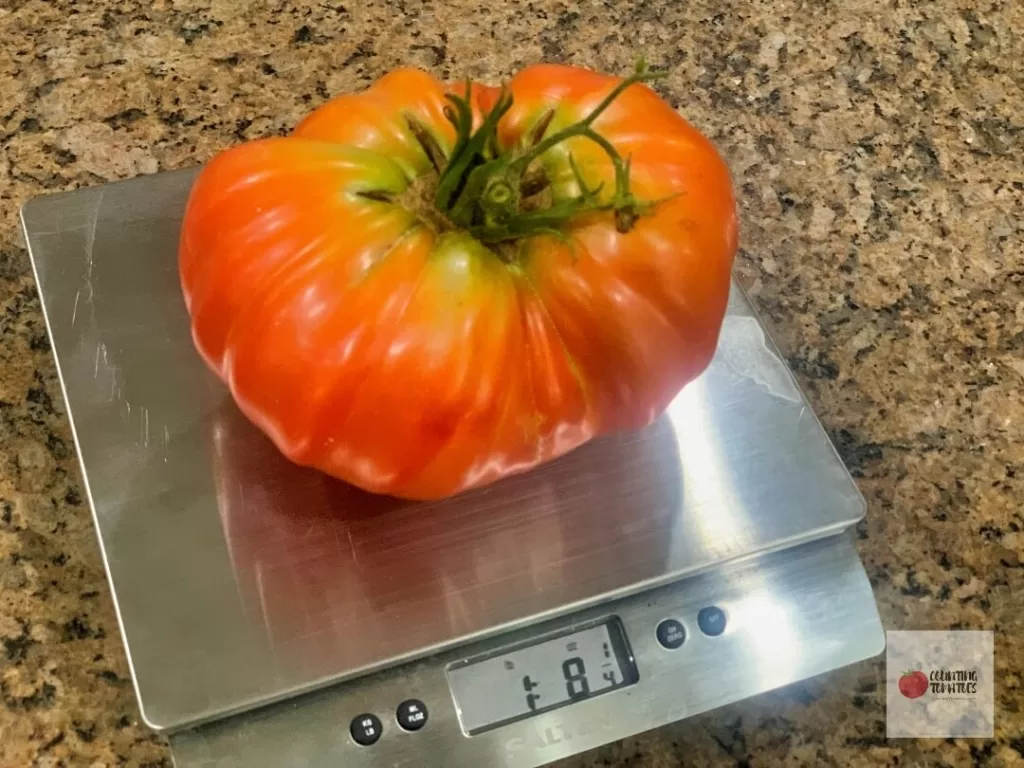
Kellogg’s Breakfast – A large yellow indeterminate tomato variety that is very sweet and not overly acidic. Even those who are not big tomato eaters are going to love the Kellogg’s Breakfast tomato. This is another good choice for a tomato contest and a sure beauty!

Better Boy – One can easily find better boy tomato seedlings at your local garden center, and they have been a long time favorite of gardeners. This is a hybrid variety that is also great for slicing and full of flavor.
Early Girl – This variety has been a popular slicing tomato for decades. As the name suggests it is one of the earliest varieties for fruit production.. It will continue to produce heavy yields of tomatoes throughout with scrumptious flavor. This is another variety that is easy to find at your local garden center.
Super Sweet 100 Cherry Tomatoes – One of my top picks of cherry tomato varieties is the super sweet 100 cherry. Clusters of grape sized tomatoes are so tasty you can snack on them at any time. These are some of my favorite salad tomatoes as they add a super sweet flavor!
Black Zebra Cherry Tomato – Grow a unique tomato and add visual interest to your salads with the dark striped Black Zebra Cherry Tomato variety. These hybrid little tomatoes have an intense flavor and are not easily found at your local grocery store.
I encourage you to grow a variety of tomatoes each year. I always plant a few favorites and plant new tomato varieties to trial in my garden.

Where to Plant Indeterminate Tomatoes
Tomatoes require at least 8 hours of direct sunlight each day for maximum yields. Choose an area where there is rich, loamy, well-drained soil. To reduce the chance of root rot nematodes, choose an area to plant your tomatoes where nightshades have not been grown the previous year.
Preparing your Soil for Planting Tomatoes
Tomatoes are heavy feeders and will benefit an annual addition of compost to the planting area. Spread a two inch thick layer of compost in your tomato growing area and incorporate it into the native organic material. Over the years, I have had the best yields by adding bone meal, blood meal and pelletized gypsum to each planting hole. Blood meal is rich in nitrogen and promotes healthy plant growth. The additional of bone meal is high in phosphorous and promotes abundant blooms and fruit. The pelletized gypsum adds calcium to the soil to prevent blossom end rot.
How to Plant Indeterminate Tomatoes
In the spring, plant tomatoes on, or two weeks after, the average last frost date for your area. In the fall, those with a longer growing season, can plant transplants again in July for fall tomatoes.
Dig a hole for each transplant that is twice as deep and twice as wide at the pot the seedling is growing in. Tomatoes will form roots along the stem so it is important to bury several inches of the stem below the soil. You will produce a stronger plant with more roots by planting the seedling deep.
In each planting hole, add 4 tablespoons of blood meal, 4 tablespoons of bone meal and 1 cup of pelletized gypsum. Strip any leaves off the lower stem that is going to be beneath the ground and place the tomato seedling in the hole. Gently firm the soil around the plant and water thoroughly.
Space indeterminate tomatoes 4’ apart along the planting row and place at least 4’ between your rows. Adequate air flow between the plants will greatly reduce the chance of disease.
How to Stake Tomato Plants
Left uncaged, tomato vines will sprawl all over the garden. A training system with wooden stakes, tomato cages, strings or a combination of is key to keeping tomatoes contained.
Most gardeners use a heavy-duty large tomato cage around each tomato plant. I also prefer to place stakes around my plants for additional support. Indeterminate tomatoes can grow over 6’ tall, so a tall cage is a must.
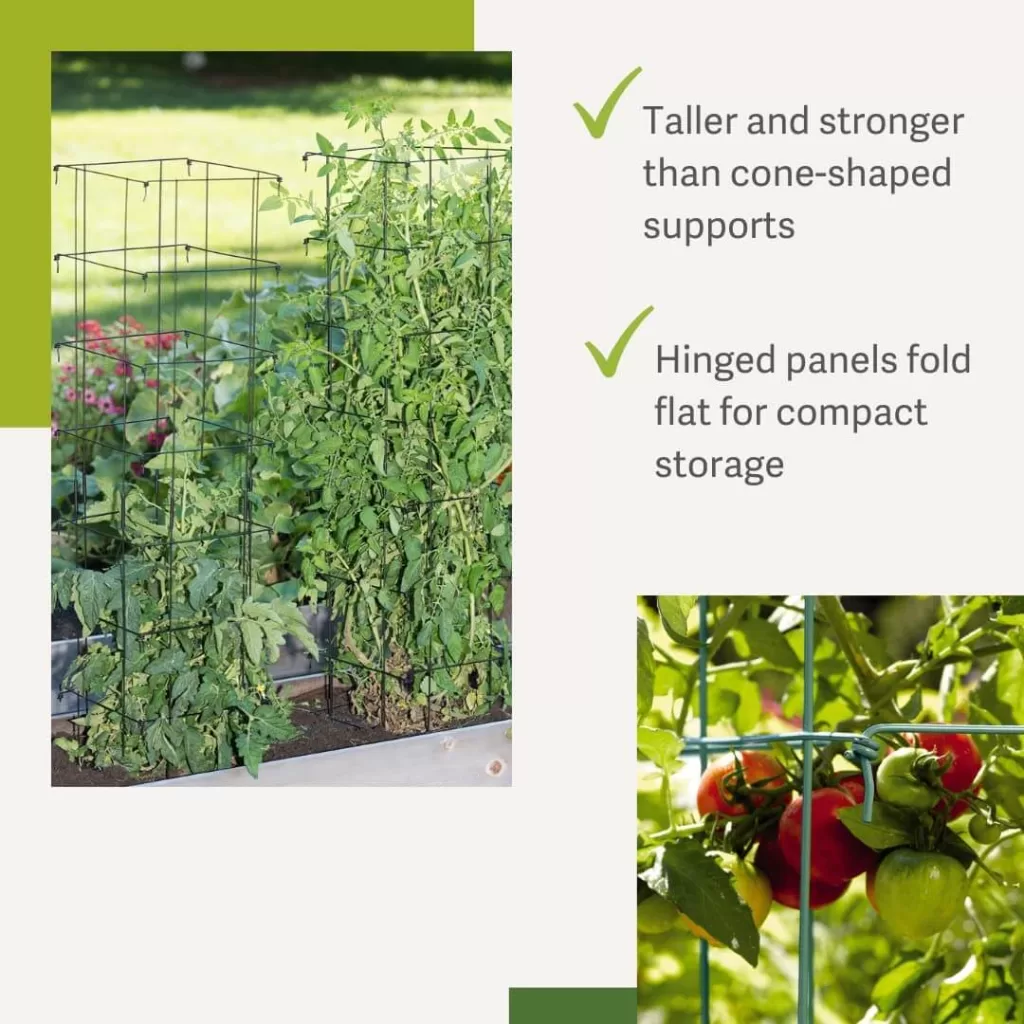
If you’re planting many tomato plants in rows, the Florida Weave is a cost effective and time efficient method of staking indeterminate tomatoes.
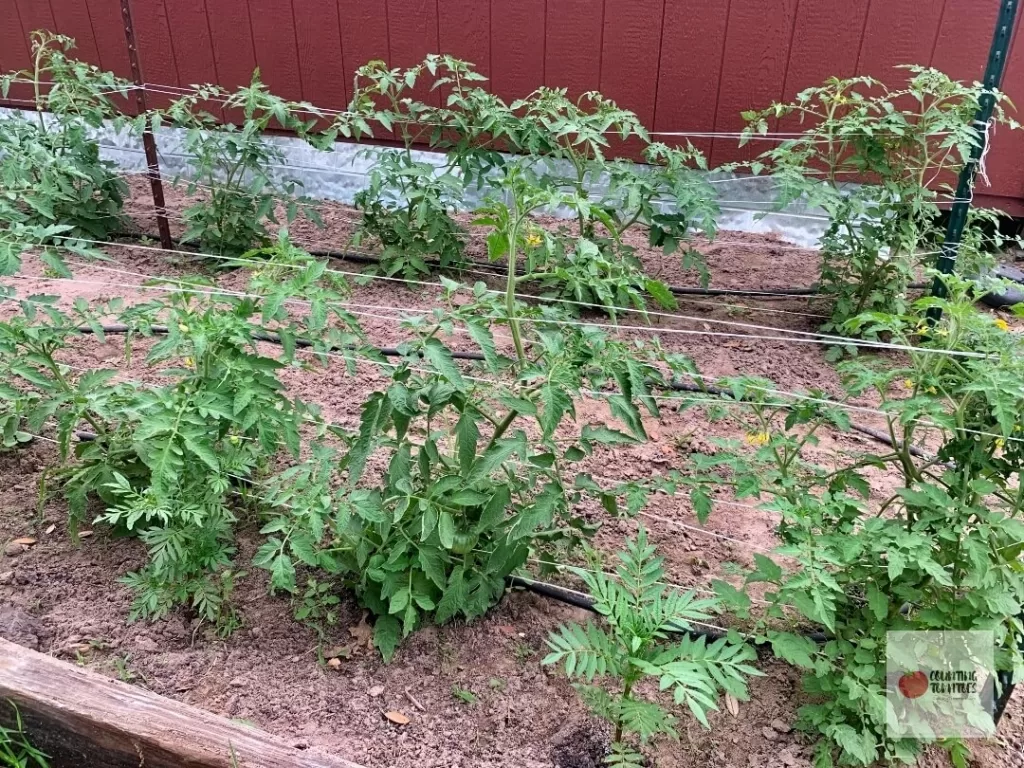
How to Prune Indeterminate Tomatoes
Due to the large plant growth, it is beneficial to prune the suckers on indeterminate varieties to promote fruiting. Do not begin pruning until your plant has been growing in the garden for a week or so. From that point, you want to prune the tomato to keep one main stem. Some refer to this as pinching tomatoes.
Prune the suckers so they do not turn into new growth stems. As the tomatoes grows it produces leaves off the main stem. Stems that grow in the joints, or tomato leaf axils, between the main stem and the leaves are called suckers. If left alone the sucker will turn into an additional main stem itself and can make the tomato plant unruly. Prune the non-flowering sucker with a sharp pair of pruners or by pinching it with your finger.
Be sure not to prune the top 1/3 of the tomato where new growth and flower clusters appear. Continually pruning throughout the growing season will ensure your tomato maintains a manageable size. The goal is to have a main stem with leaves branching off, but no suckers are left growing in the leaf axils. Pruning directs the growth to a single main stem.
Pruning indeterminate tomatoes will allow the plant to be much easier to manage and stake. It also will make the plant stronger and increase the fruit size.
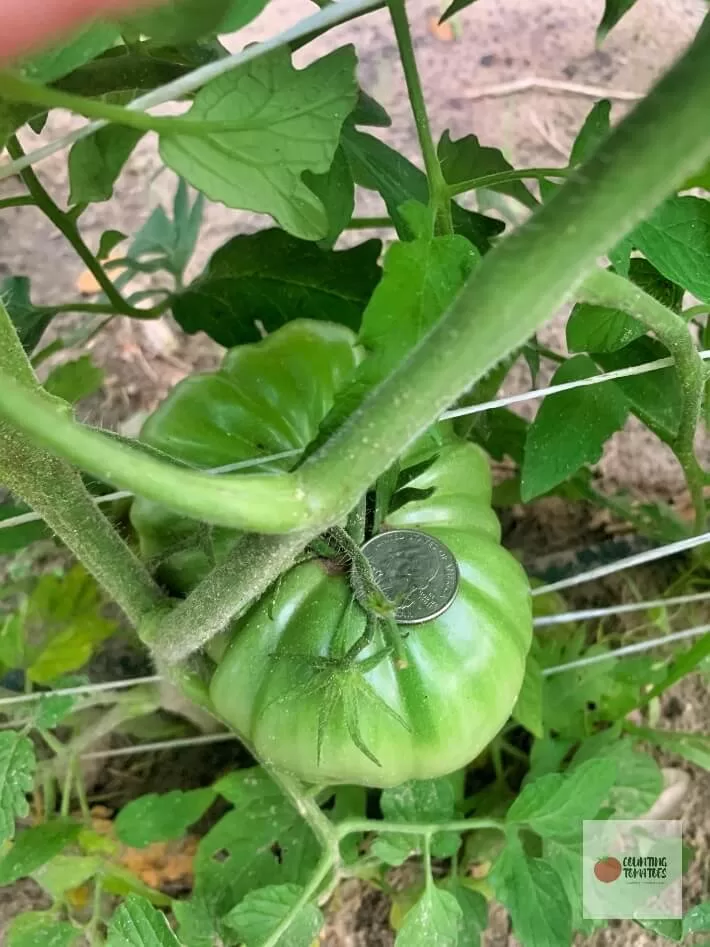
How to Best Water Tomato Plants
Tomato plants are susceptible to fungal disease. Even if you choose disease resistant varieties, you can still experience disease spread by insects and soil borne pathogens. Watering tomatoes correctly is one of the biggest keys to preventing disease. Early blight is a fungal disease identified by yellow thumb size spots on the lower leaves of the tomato plant. Gardeners using soaker hose or drip irrigation grow the healthiest tomatoes. Avoid overhead watering tomatoes and keep the foliage dry as you irrigate. Using overhead watering methods will contribute to fruit split and cracks and will continuously wet the tomato leaves.
Never let your tomatoes wilt. Consistent water is key to keeping plants healthy. In south Texas, I find using an orbit timer on my drip irrigation keeps the garden watered consistently when were in a drought.
Growing tomatoes is one of my favorite things to do and I encourage you to put at least a couple of tomato plants in your home garden this year.


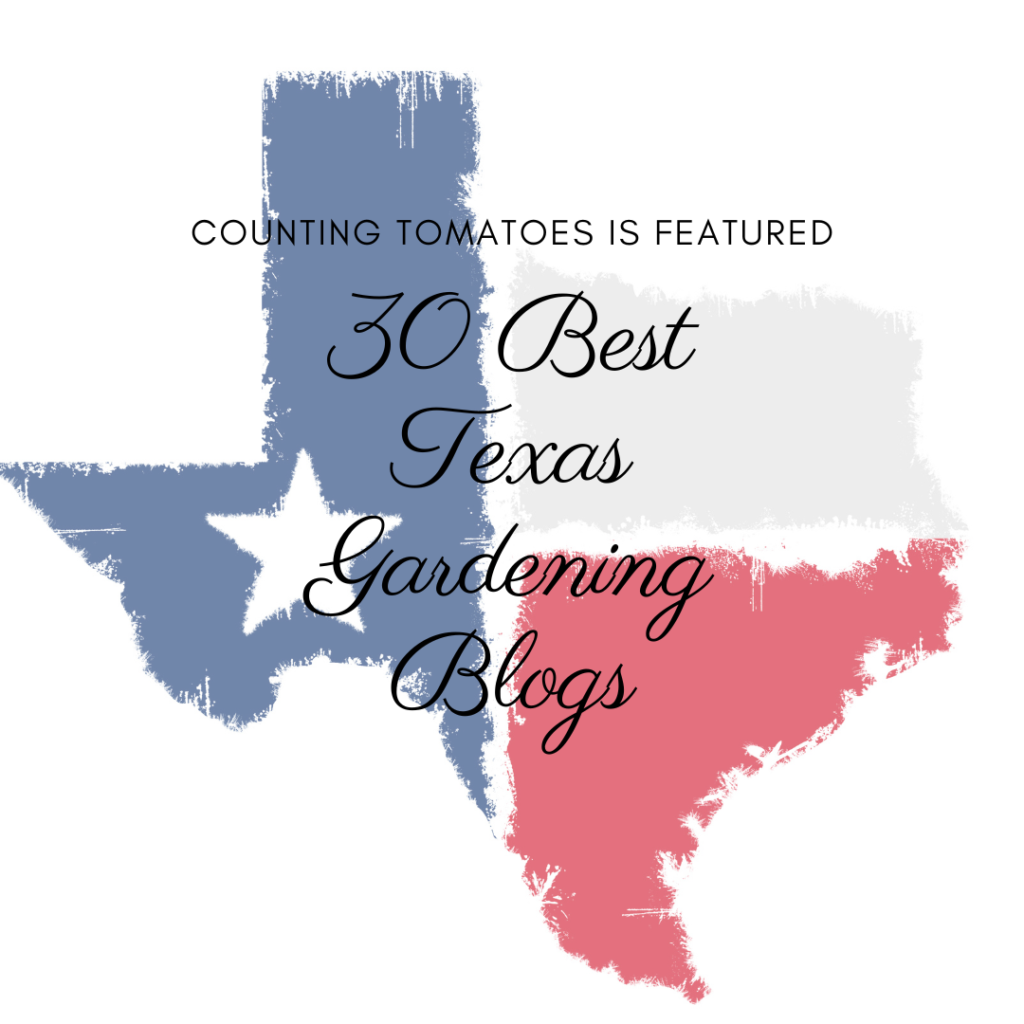
Thank you so much for this post, Stacie! We recently got vegetable boxes and wanted to grow tomatoes but had no idea where to start. These tips and tricks will be a huge help. Thank you! Hugs, CoCo